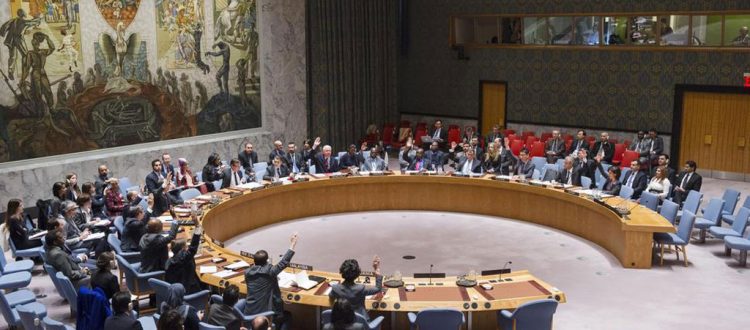Complementary agendas – women and youth building peace
We in the youth peacebuilding community must be careful not to allow the exclusionary nature of discourse on violent extremism to have an impact on how resolution 2250 is implemented in coming years and months. We have to bear resolution 1325 and its sister resolutions in mind in all our work to make sure one inclusionary agenda doesn’t stamp out another.
| Suggested Reading | Conflict Background | GCCT |
We in the youth peacebuilding movement have been greatly influenced and inspired by the women, peace and security community. Women and youth are both large groups, forming roughly 50% and 25% of humanity respectively, which have been traditionally excluded from the realm of peace and security, it’s time to claim our space.
Women’s role in building peace and maintaining security was recognised by the UN Security Council in 2000 with resolution 1325 and with subsequent sister resolutions. Resolution 1325, and its sister resolutions, were among the main inspirations for the push for a resolution on youth, peace and security.
Now that resolution 2250 has been passed, it’s time to look at how these two agendas – on women, peace and security and youth, peace and security – can complement each other.
The age bias in the women’s peace movement
The fight for gender equality has been going on for decades, not only within the field of peace and security. As with any such longstanding struggle, those who have been in the midst of it are also the ones who are best positioned to reap the results.
When women are invited to the table to discuss peace and security, these women are older women. Young women don’t have the same connections and networks, or the same political capital as those who are older. Yet they must not be left out – young women are some of the most driven and innovative members of both the women’s movement and the youth movement!
With resolutions 1325 and 2250 complementing each other, the importance of the inclusion of young women in peace and security is clear.
The gendered realities of youth, peace and security
The shift in discourse which led to the adoption of resolution 2250 has to a large extent been informed by increased worries of violent extremism.
Unfortunately, the global policy conversation about violent extremism is largely male-dominated, seeing young men as a threat. Young women, on the other hand, are hardly seen at all. At most, this discourse portrays them as victims of violence or possibly as “Jihadi brides”.
We in the youth peacebuilding community must be careful not to allow the exclusionary nature of discourse on violent extremism to have an impact on how resolution 2250 is implemented in coming years and months. We have to bear resolution 1325 and its sister resolutions in mind in all our work to make sure one inclusionary agenda doesn’t stamp out another.
UNOY Peacebuilders are a member of the Global Coalition for Conflict Transformation, comprised of organizations committed to upholding and implementing the principles of conflict transformation.
This is a shortened version of a presentation given by UNOY Peacebuilders’ Leading Coordinator, Sölvi Karlsson, at the International Peace Institute on 10 March 2016. Click here to watch a recording of the entire event.
This article was originally published on UNOY Peacebuilders’ website and is available by clicking here. The views expressed in this article do not necessarily reflect the views of TransConflict.




















Complementary agendas – women and youth building peace – TransConflict https://t.co/UngwI7XcIV
Complementary agendas – women and youth building peace https://t.co/4mtlnwugDB #Nonprofit